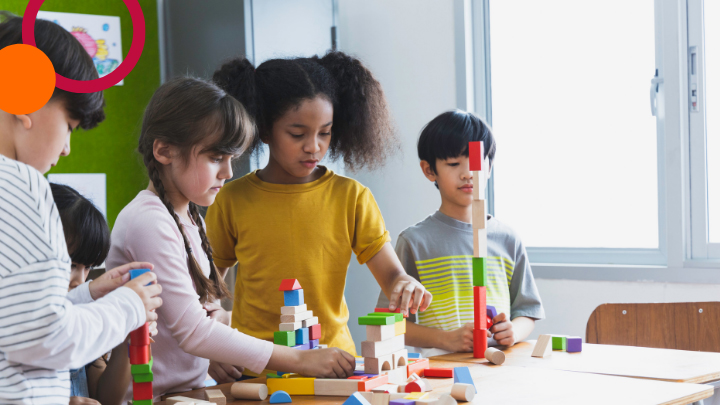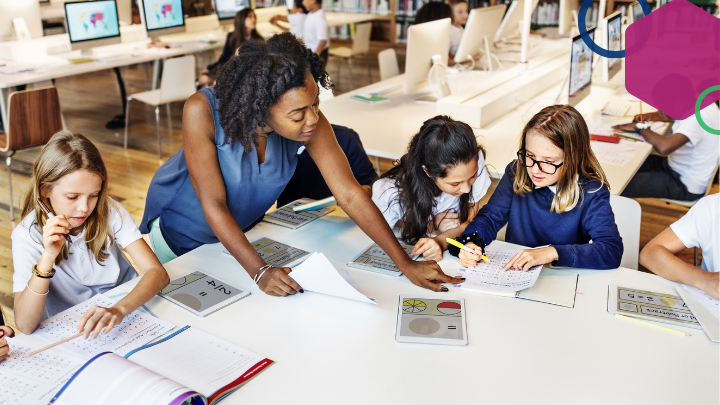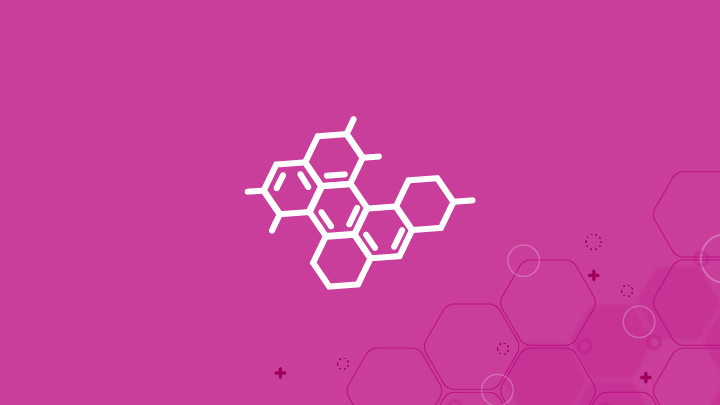This blog is the second in a series that highlights the work of the Meeting the Needs of All Learners Master Teacher Project. Each author is an experienced educator from the Kansas City area with deep expertise in differentiation and working with students with disabilities and English Learners.
Bringing the wind and the ocean to the classroom can be challenging, but not impossible — even when you teach in Kansas. Bringing science phenomena to the classroom for all students involves teaching vocabulary, building on background knowledge, and making concepts kinesthetic and visual. These supports are particularly helpful for students with disabilities and English learners, but they also make science come alive for all students!
Teach the Vocabulary
Before a unit begins, I pre-teach vocabulary and new concepts, usually including visuals so that my English learners can see what the vocabulary looks like. I use many tools, including NearPod slides, a word wall, a jam board, or a concept map with pictures, text, and links to short videos. I have students work with the vocabulary by using a Frayer model and sorting pictures that fit and don’t fit the meaning of the word. My goal is to lay the foundation for what students are learning and build their confidence in expressing what they know.
For example, in my strategy How Academic Words Support A Science Concept, I have students pair pictures and academic vocabulary with arrows. In this strategy, students are able to show what happens in a concept from beginning to end. This supports EL students and students with disabilities in using academic language to explain the science concept to their peers.
Build on Background Knowledge
I discovered that students really connect with analogies that show them how they already understand the processes behind a concept. This helps to build upon their background knowledge and make connections to new learnings. For example, when we were learning about condensation, I asked students about what happens to the outside of a cold gallon of milk when they bring it out of a grocery store on a hot day. My students told me that drops of water are on the outside. I told them that because they know about this, they know about condensation.
Make the Concepts Kinesthetic/Based in Movement
All students — especially students with disabilities and English learners — learn well through their senses. Through touch and movement, they can intuit concepts that are abstract or difficult to imagine and verbalize.
For example, I use a kinesthetic (movement-based) approach to teach how two colliding air masses of wind can push an air parcel further into the troposphere. I ask my students to put their hands flat with their fingertips pushed together. I say, “Between our fingertips is an air parcel. When we push them together, what happens to the air parcel?” My EL students instantly get the concept and can respond, “It pushes it higher.” This allows them to easily grasp scientific ideas that would have been difficult for them to explain otherwise.
Create a Virtual Lab or Simulation
How else can you bring the wind and the ocean to students, even in Kansas? Virtual labs and simulations bring abstract concepts to life. For example, to demonstrate the impact of the wind on ocean waves, I made a video of myself blowing through a straw over water sprinkled with pepper flakes inside a plastic container. To make the concepts totally clear, we discussed how each part of the simulation represents the wind, ocean, and currents. My students are easily able to respond, “The wind is making the water go in the same direction that it is going, along the continent.” I ask my students to draw their observations in a Google drawing to help them explain the movement of the water.
In Conclusion
As educators, our goal is to meet the needs of all learners so that we can approach them at their ability and knowledge level. It is also to put the tasks that we are working on within their reach. This helps them to persevere in the task of learning. With their efforts and our support, all students will grow in what they know and can do. The best way we as science teachers can do this is to bring examples and simulations to the classroom to help science processes become a part of what they know.
Explore Nicole’s strategies and more at the Meeting the Needs of All Learners Master Teacher Project.
See All Strategies






